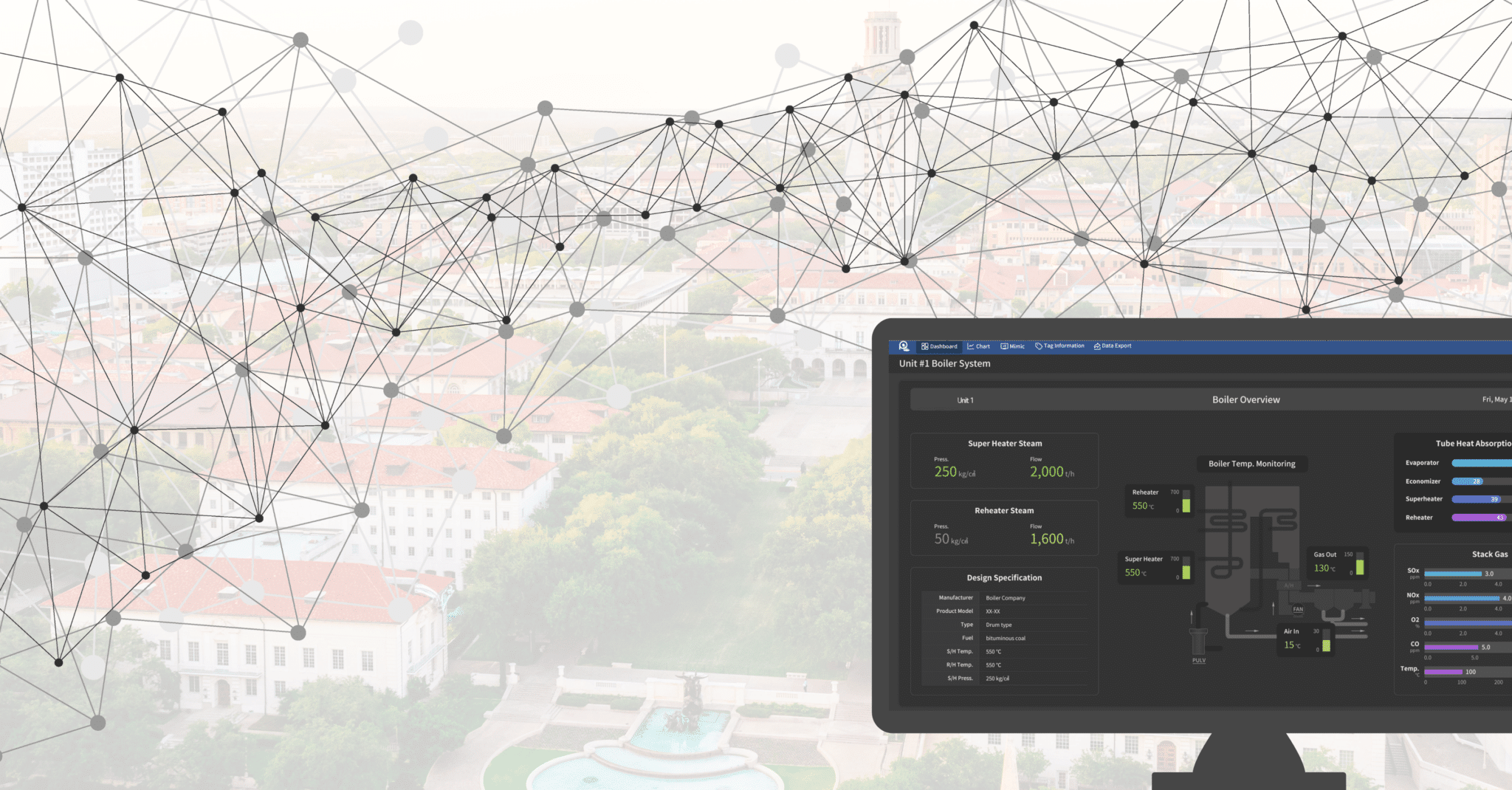The University of Texas at Austin campus operates one of North America’s largest and most innovative campus energy plants. The Carl J. Eckhardt Complex includes a combined heat and power (CHP) plant with a 135-MW power capacity that provides 100 percent of the electricity, air conditioning, and heating to the University’s main campus — a 431-acre site serving over 70,000 students, faculty, and staff.
The single largest electrical load on campus is the 60,000-ton chilled water cooling system. This system provides air conditioning to the campus, which has reached peak demand of 33,000 tons. This campus-energy system includes four chilling stations and 9.5-million-gallon chilled thermal water storage tanks.
Identified Challenges
Though The University of Texas at Austin Carl J. Eckhardt CHP Complex had employed a data historian since the early 2000s, the team began to identify problems with the existing historian software. The historian failed to keep up with the ever-changing technological environment, resulting in challenges with microgrid data archiving and loading speeds, incomplete and fragmented data, and data analysis. All of which limited the scalability of the software as the plant’s needs expanded. With data stored separately across multiple systems on offshore devices, it was impossible to monitor the plant in real-time, share information easily with others, or analyze microgrid data without manual calculations.
Solution & Benefits
The University of Texas at Austin decided to replace its existing historian at the Carl J. Eckhardt CHP Complex with HanAra Software’s HanPrism. HanPrism manages highly complex and extensive data without any loss or interruption all while processing data faster and more precisely.
The HanAra professionals replaced the existing historian software with HanPrism in six days. This included the preparation of the database and installation. HanAra Software integrated three historian data systems for the chilling stations, power plant, steam generation units, building meters, and SCADA system into a single HanPrism server.
However, UT-Austin had years of microgrid data that served as the complex’s history. This data was a critical part of plant analysis, so HanAra professionals also migrated historical data. HanPrism has a built-in data migration tool, which migrated more than 10,000 points from seven years of historical data from the existing servers to the HanPrism server. After installation and usage, HanAra and UT-Austin worked together to add an additional 4,000 points to the HanPrism server with no loss of historical data.
With 14,000 points of historical data since 2009, The University of Texas at Austin utilizes HanPrism as its central gathering of data for analysis.
Upgraded Historian Server
With the implementation of HanPrism, HanAra Software provided UT-Austin with a centralized location for data. HanPrism simplified management and backup processes and eliminated redundant maintenance and support costs for multiple systems.
HanPrism now provides the total data infrastructure for the Carl J. Eckhardt Complex, continually collecting and storing equipment and building data in real time.
Through improved data visualization and analysis, including Prism WebAPI (HanAra Insight Web API) and Prism Web (HanAra Insight), the team has the information to simplify and speed up the decision-making process.
Our biggest concern in switching historian systems was the ability to migrate historical data points. The HanAra team replaced our existing software, configured it to our systems, and migrated more than six years of data onto a single server, all without any data loss.
The hallmark of HanPrism is just how user-friendly the system is. HanAra allows you to manage multiple data points quickly, all from one system.
HanAra Success Stories
Beyond Reactive Maintenance: A Smarter Approach to Wind Farm Operations
Wind energy has established itself as a reliable renewable power source across the globe. But maintaining a fleet of turbines presents different challenges compared to traditional, centralized power generation facilities. Some of the operational [...]
Biomass Plant Enhances Operational Excellence with HanPrism
In the renewable energy sector, biomass facilities face increasingly complex operational challenges that require sophisticated data management solutions. For one facility, growing compliance requirements and the desire for operational improvement led them to seek [...]
Embracing Change: How a District Energy Organization Transformed Their Data Management with HanPrism
In the world of organizational operations, the concept of "buy-it-for-life" is a rare luxury. While organizations strive for longevity in their tools and solutions, the reality is that technology evolves and so must the [...]




